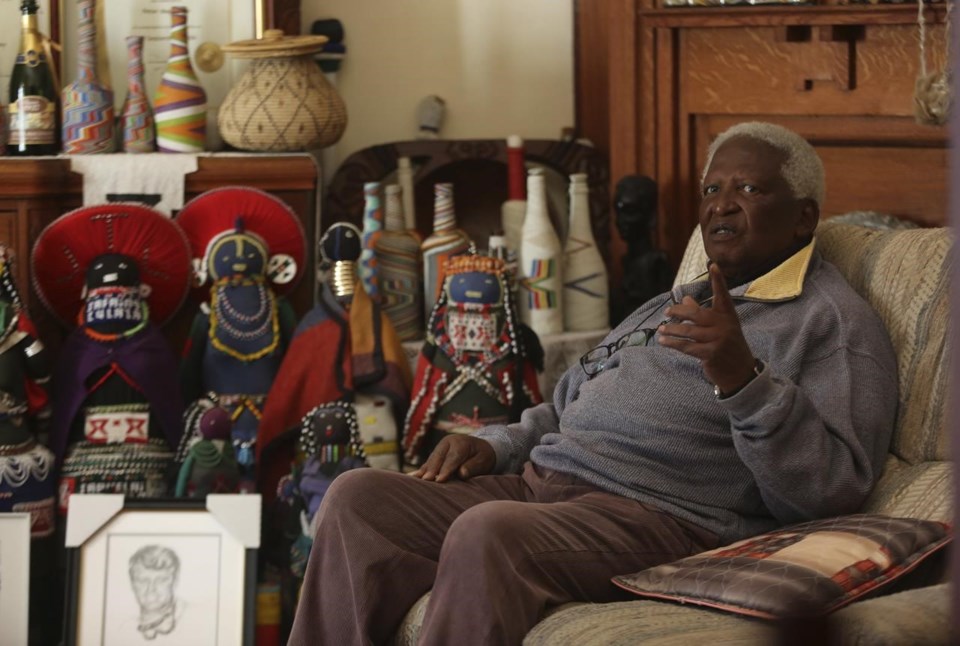CAPE TOWN, South Africa (AP) ÔÇö Peter Magubane, a fearless photographer who captured the violence and horror of South Africa's apartheid era of racial oppression, and was entrusted with documenting first years of freedom after his release from prison, has died. He was 91.
Magubane died Monday, according to the South African National Editors' Forum, which said it had been informed of his death by his family.
He was a ÔÇťlegendary photojournalist,ÔÇŁ the editors' forum said. The South African government said Magubane ÔÇťcovered the most historic moments in the liberation struggle against apartheid.ÔÇŁ
Magubane photographed 40 years of apartheid South Africa, including the 1960 Sharpeville massacre, the trial of Mandela and others in 1964, and of 1976, when thousands of Black students protested against the apartheid government's law making the Afrikaans language compulsory in school.
The Soweto uprising became a pivotal moment in the struggle for democracy in South Africa after police opened fire on the young protesters, killing at least 176 of them and drawing international outrage. Magubane's award-winning photographs told the world about the killings.
Magubane became a target of the apartheid government after photographing a protest outside a jail where Mandela's then-wife was being held in 1969.
Magubane was jailed and kept in solitary confinement for more than a year-and-a-half. He was imprisoned numerous times during his career and subjected to a five-year ban that prevented him from working or even leaving his home without police permission. He said he was shot 17 times with shotgun pellets by apartheid police while on assignment and was beaten and had his nose broken by police when he refused to give up the photographs he took of the Soweto uprisings.
Faced with the option of leaving South Africa to go into exile because he was a marked man by the apartheid regime, he chose to stay and continue taking photographs.
"I said, ÔÇśno I will remain here. I will fight apartheid with my camera,ÔÇÖ" he said in a recent interview with national broadcaster SABC.
While Magubane photographed some of the most brutal violence, he also created searing images of everyday life under apartheid that resonated just as much.
One of his most celebrated photographs was a 1956 image of a Black maid sitting on a bench designated for whites only while seemingly caressing the neck of a white child under her care in a wealthy Johannesburg suburb. The photo spoke of the absurdity of the forced system of racial segregation given that so many white children were looked after by Black women.
Magubane began his career at the South African magazine, Drum, gained fame at the Rand Daily Mail newspaper and also worked for Time magazine and Sports Illustrated, earning international recognition.
He was appointed official photographer to Mandela after the anti-apartheid leader was released from prison in 1990 and photographed Mandela up until he was elected the first Black president of South Africa in historic all-race elections in 1994.
He said his favorite photograph of Mandela was him dancing at his 72nd birthday party months after being released after 27 years in prison.
ÔÇťYou can see the joy of freedom shining in his eyes,ÔÇŁ Magubane said.
___
AP Africa news:
Gerald Imray, The Associated Press




